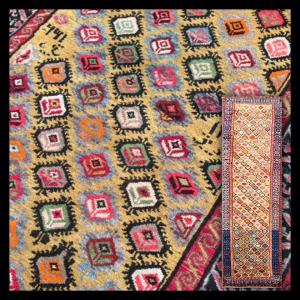They are highly regarded for their intricate designs, vibrant colors and excellent craftsmanship.
Dagestan carpets, a long history dating back centuries. They were traditionally made by local weavers using techniques passed down from generation to generation. These rugs are characterized by their geometric designs, which often include designs such as medallions, stars, rosettes and stylized flowers. The designs are generally bold and symmetrical, with contrasting colors that create a striking visual impact.
In terms of materials, Dagestan rugs are usually woven with high quality wool. The wool is often hand spun and dyed using natural dyes derived from plants and insects, resulting in rich and harmonious color palettes. The use of natural dyes adds to the appeal and value of these rugs.
Known for their durability and sturdiness. The weavers use a specific knotting technique known as the symmetrical knot or Ghiordes knot, which ensures the rug is tightly woven and able to withstand heavy use. Finished rugs are often thick and have a plush pile, providing both visual and tactile comfort.
These rugs have gained international recognition and are highly sought after by collectors and enthusiasts of traditional textiles. They are considered valuable works of art and are often displayed in museums or used as decorative elements in high-end interiors.
Overall, Dagestan rugs are valued for their exquisite craftsmanship, unique designs, and cultural significance. They represent a rich weaving tradition that has been preserved and celebrated for centuries in the Dagestan region of Russia.
Carpet dated 1320 of the Hegira (1902), carpet with a saffron background dotted with polychrome diamonds all over the field. The weavers changed hands, hence the color differences from side to side.
Size: 500x111cm
Condition: some wear and restorations but remains in fair condition.
MY COMPLETE GALLERY




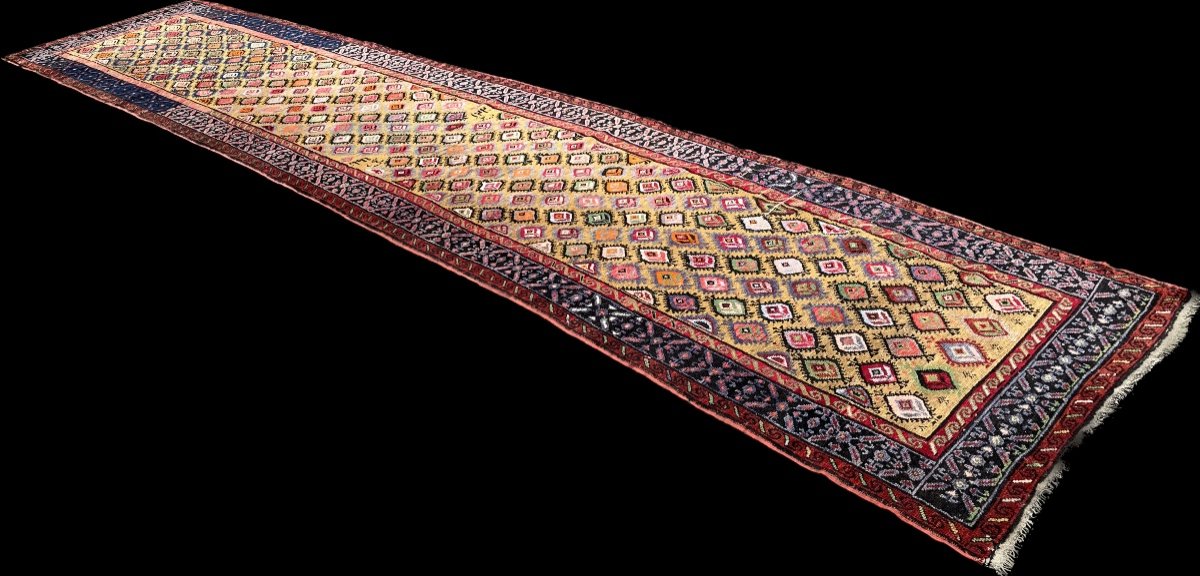

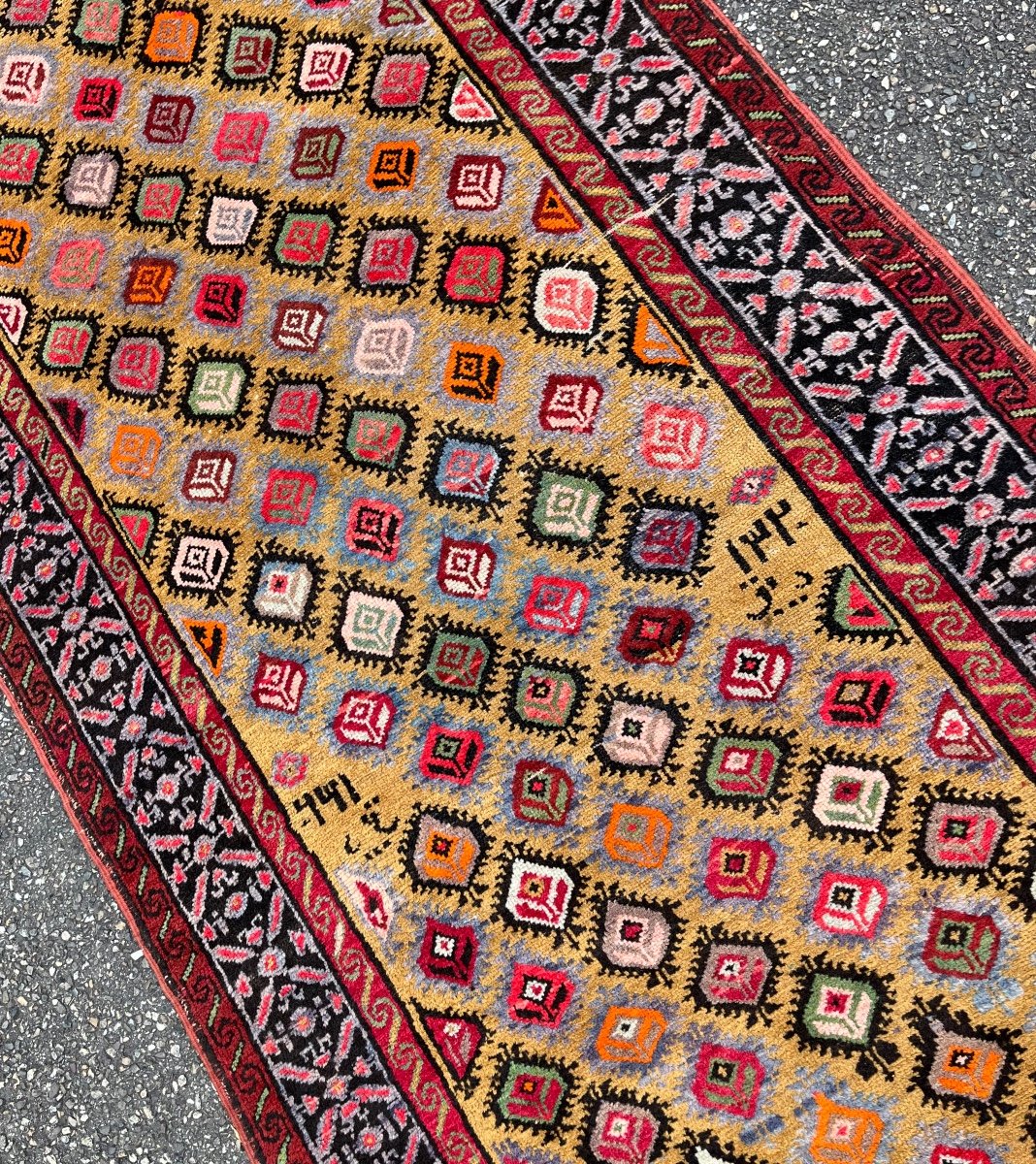
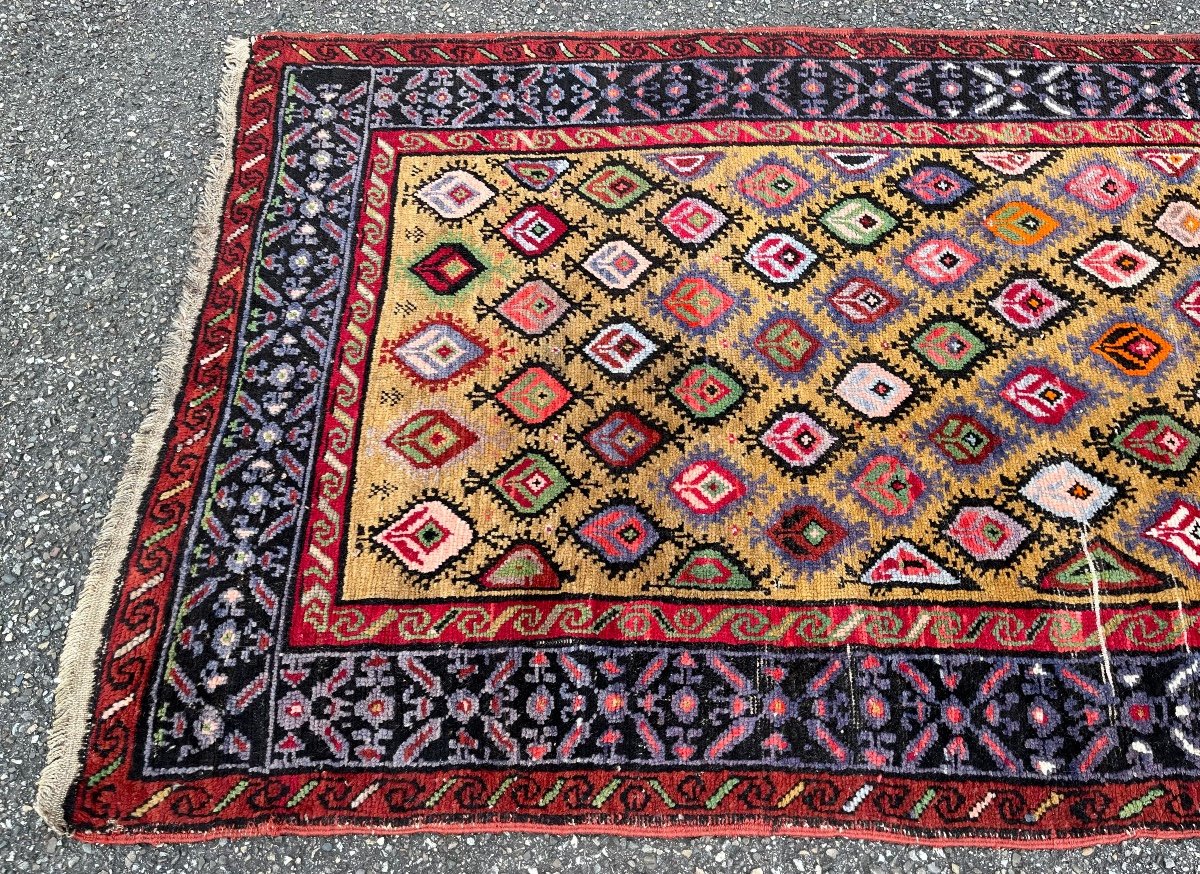


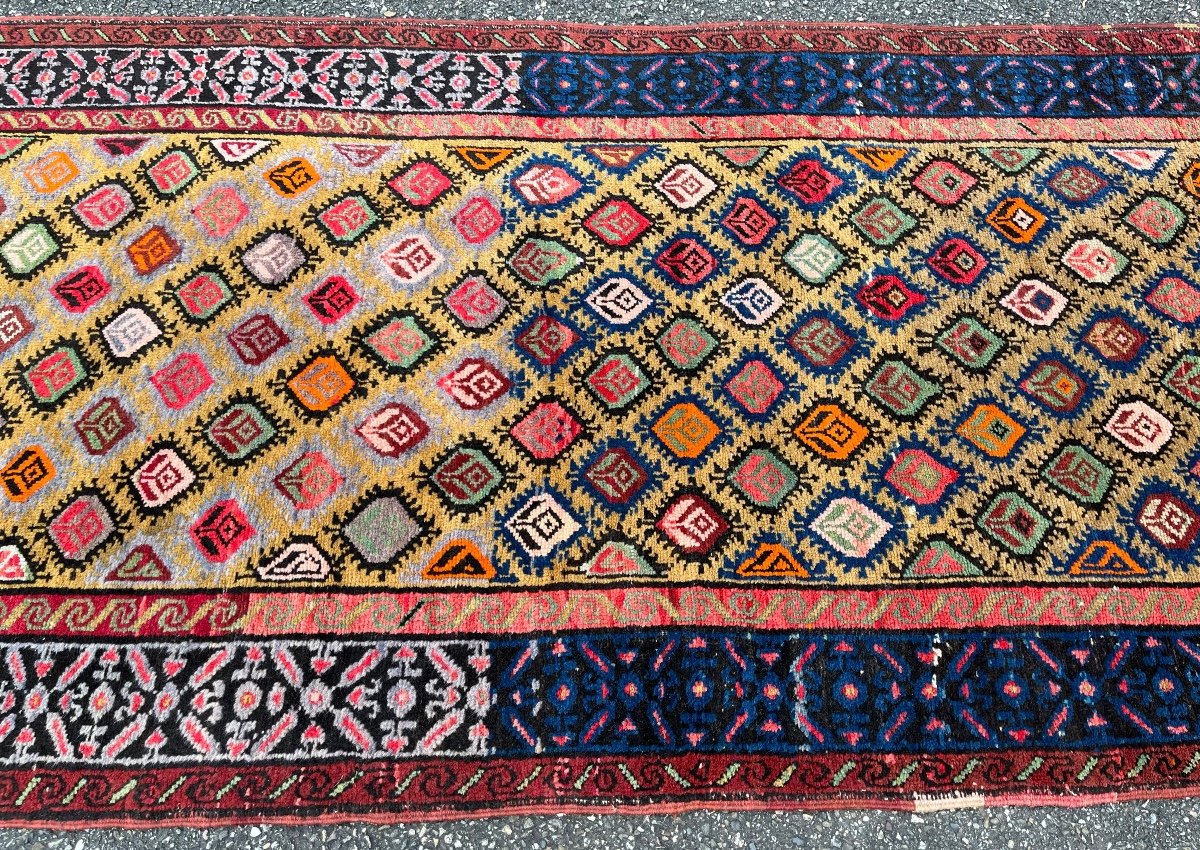
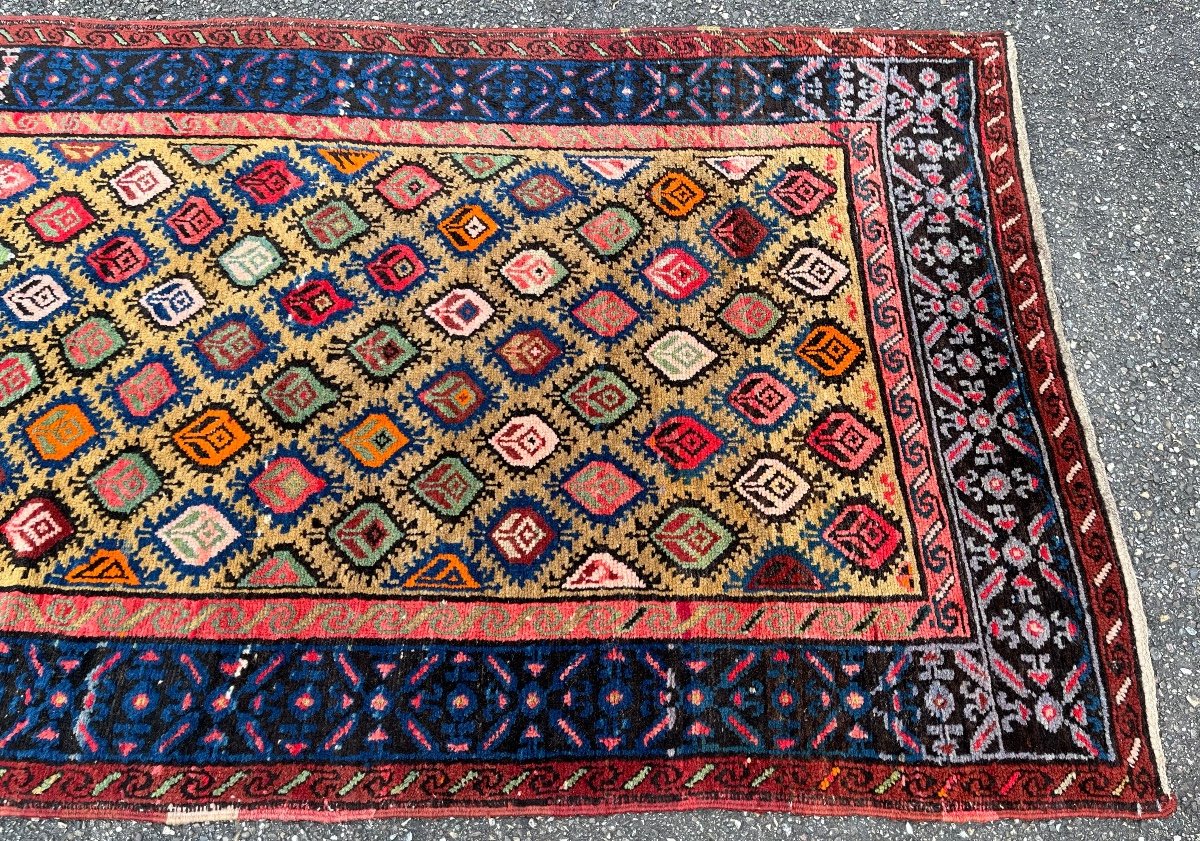
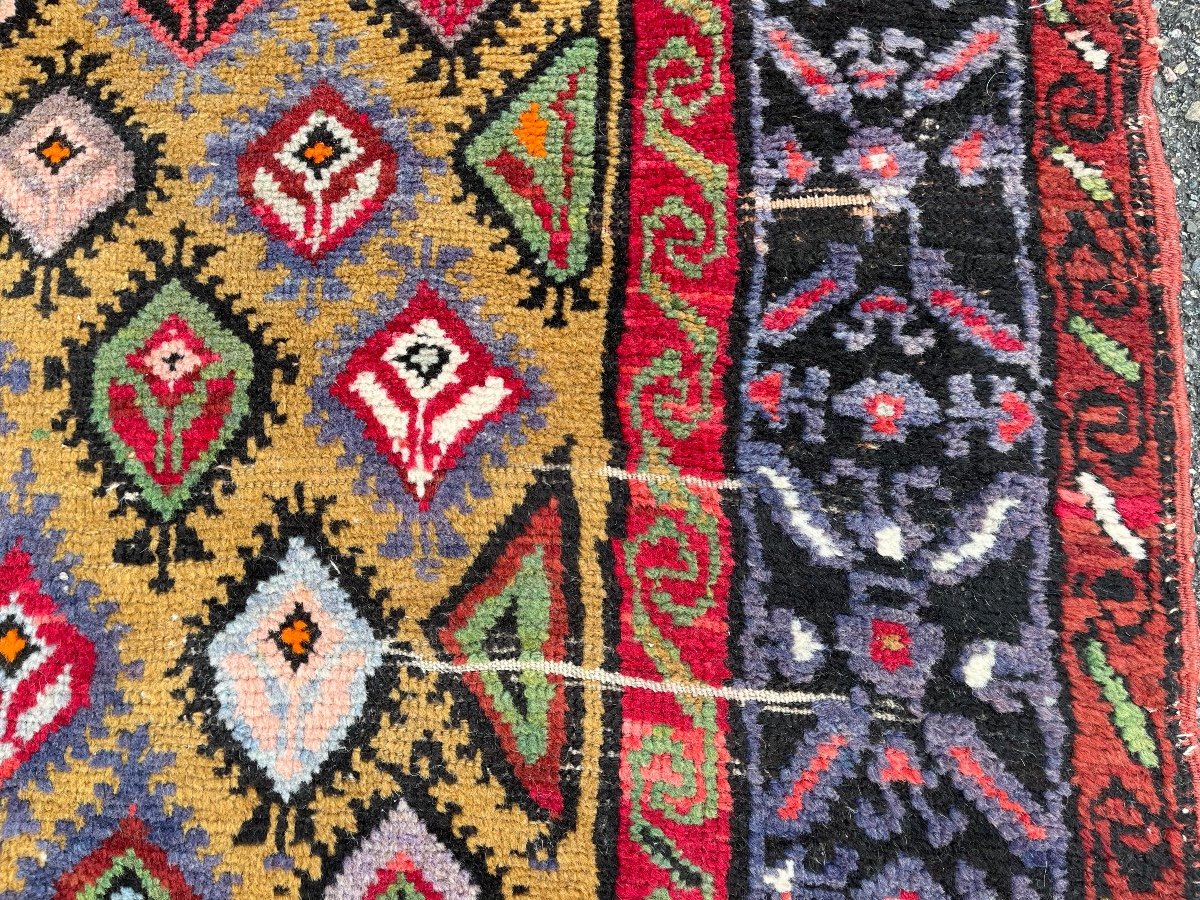
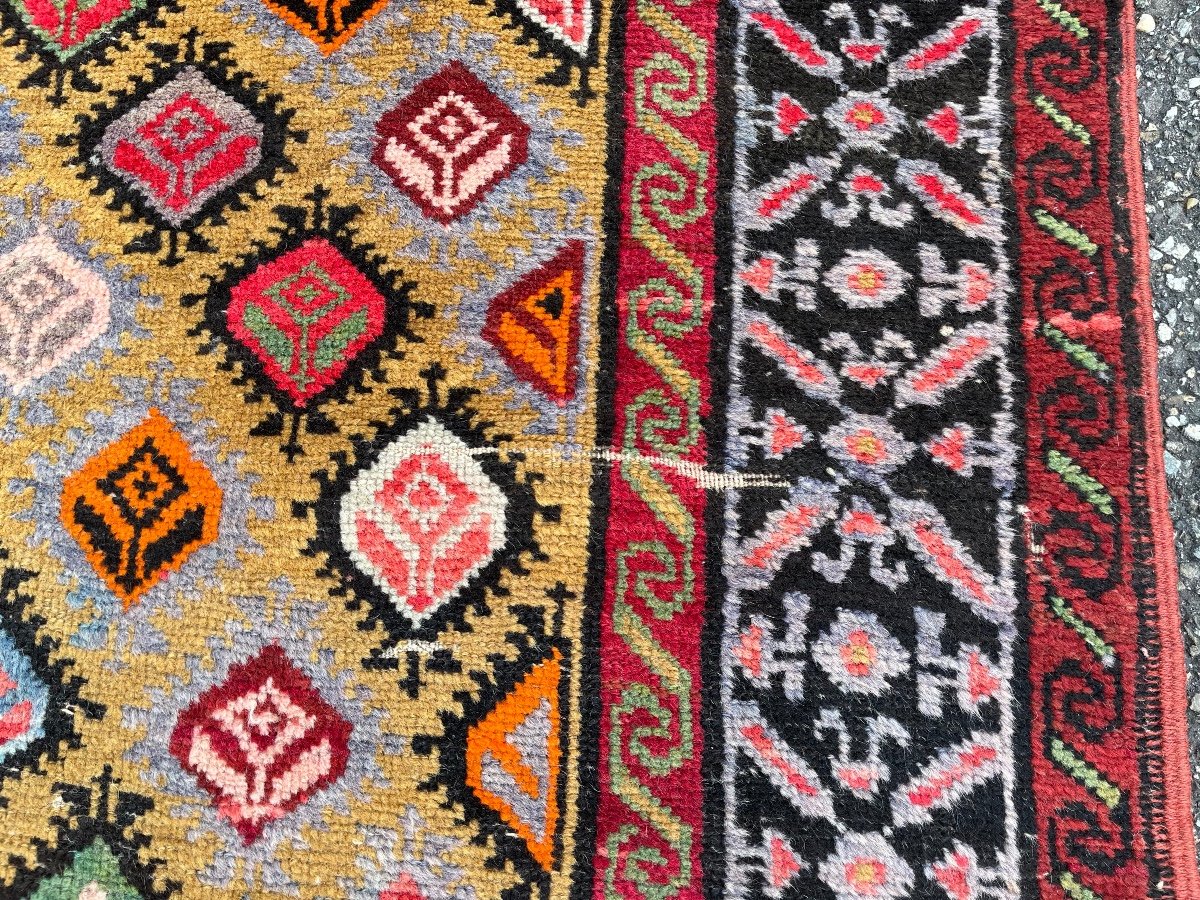
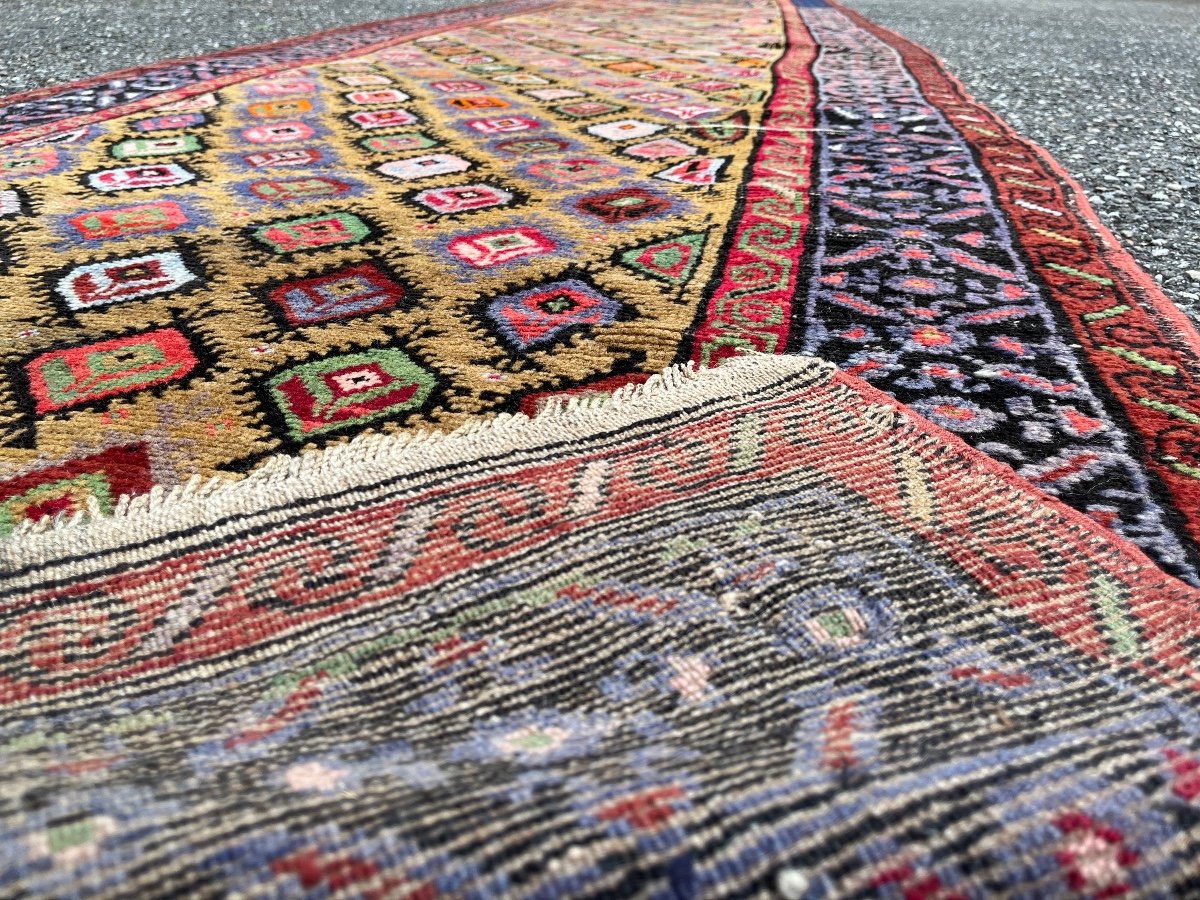
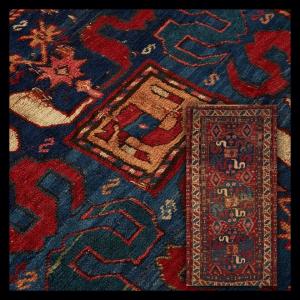

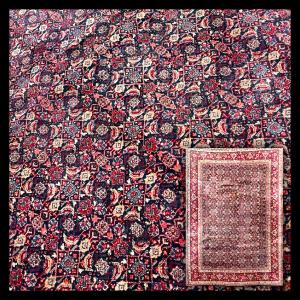



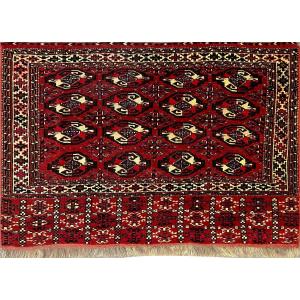








 Le Magazine de PROANTIC
Le Magazine de PROANTIC TRÉSORS Magazine
TRÉSORS Magazine Rivista Artiquariato
Rivista Artiquariato
